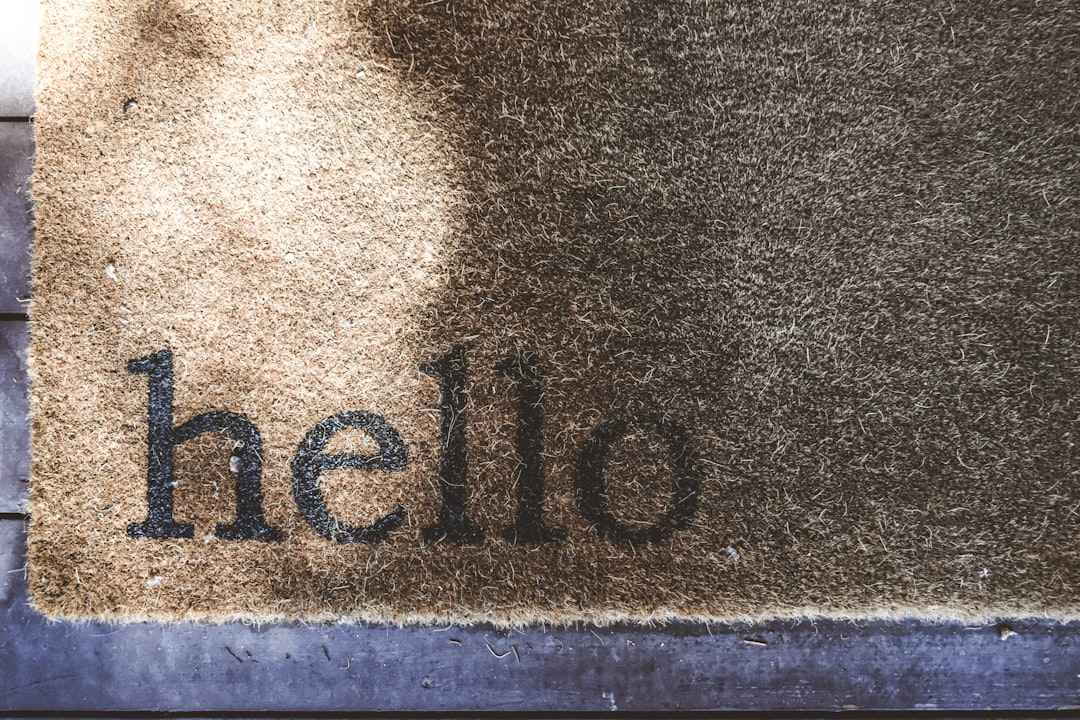

Engage prospects with a scan and streamline customer engagement with FREE QR code marketing tools by Sona – no strings attached!
Create a Free QR CodeFree consultation

No commitment

Engage prospects with a scan and streamline customer engagement with FREE QR code marketing tools by Sona – no strings attached!
Create a Free QR CodeFree consultation

No commitment
In today’s digitally driven world, QR codes have evolved from novelty to strategic powerhouse, converting offline interactions into measurable online actions. For carpet rental companies, QR codes offer a seamless and effective way to engage customers at every touchpoint, from trade shows to delivery of temporary carpets for events or as part of broader carpet cleaning and installation service programs. This technology bridges the gap between physical marketing materials and digital engagement, removing obstacles that often impede lead generation and bookings.
Carpet rental services face increasing pressure to provide not only excellent carpets and support but also convenient, data-driven experiences. Whether customers are comparing event carpet rental options, assessing the cost-effectiveness of renting versus buying, or seeking sustainable solutions, capturing interest at the moment it happens is crucial for sustained revenue growth. Yet, many companies miss high-value prospects simply because those interactions are not captured in real time, often relying on manual processes or paper forms that result in untracked leads. QR codes facilitate instant engagement, making it easier for new leads to request quotes, compare pricing, submit feedback, or access exclusive offers on the spot.
By leveraging QR codes, carpet rental companies can modernize outdated analog processes like printed brochures, paper order forms, or manual lead capture and transform them into scalable, trackable workflows. These deliver higher conversion rates, improved customer satisfaction, and actionable insights. With increased visibility into previously anonymous traffic, every physical-to-digital touchpoint becomes an opportunity to nurture and convert genuine interest. Consider digitizing offline materials such as brochures to ensure every interaction is attributed.

QR codes connect physical touchpoints to digital outcomes, making goals like faster lead capture, more event bookings, stronger retargeting lists, and better customer retention easier to achieve. For carpet rental companies, this means turning casual interest during a trade show or delivery into a quote request or booking within seconds. Removing friction at these moments has a clear impact on conversion rates and sales velocity.
Many carpet rental businesses still lose track of promising prospects because interactions are not logged anywhere. Brochures get handed out without tracking who received them, installation teams leave paper forms that rarely get returned, and handwritten contact details are misread or lost. Replacing these analog moments with QR-enabled experiences saves time and ensures every interaction is captured and routed to the right follow-up workflow.
Here is how to address these challenges effectively:
Traditional lead collection processes are inefficient and prone to data loss. QR codes streamline these workflows, ensuring every scan results in a frictionless digital experience and reliable data capture. With platforms like Sona QR, you can generate dynamic codes, manage destinations, review analytics, and sync scan data to your CRM for instant follow-up. Start creating QR codes for free.

Carpet rental companies face a persistent challenge: closing the loop between face-to-face interactions and digital outcomes. Event planners and facilities managers may see your products in person, handle your brochures, or talk to representatives during site visits, but without a direct link to digital actions, intent signals end up anonymous and untracked. QR codes turn passive materials like service labels, delivery packaging, invoices, and signage into entry points for quotes, scheduling, and content downloads.
This matters throughout the rental lifecycle. An event coordinator evaluating runway carpets at a trade show can scan a QR on booth signage to view textures and colors, save favorites, and request a proposal. A facilities manager overseeing a temporary installation can use a QR on a service tag to request additional sections or schedule pickup. Each scan creates a validated, trackable interaction that drives measurable conversion. When showcasing event flooring, explore how custom event carpet can complement your QR-powered product galleries.
For carpet rental teams relying on trade shows, direct mail, and in-person service visits, QR codes can turn each printed item into a step toward revenue. Review Sona QR’s direct mail strategies to transform mailers into instant quote requests.
QR codes offer flexibility across many customer journeys in carpet rentals. The right format reduces friction and nudges customers toward the desired action. A single event may require multiple formats: a web link for browsing, a form for quote requests, and a vCard for saving a representative’s contact. Choosing formats intentionally is crucial to streamlining lead capture and enabling follow-up.
Dynamic QR codes bring additional control. They let you update destinations after printing, run A/B tests on landing pages, and collect analytics. For long-lived assets like showroom signage or delivery labels, dynamic codes are a smart investment because they can evolve with your campaigns.
With Sona QR, you can generate these formats from one platform, update destinations for dynamic codes, and centralize analytics. For carpet rentals, web links and forms tend to drive the highest conversion paired with simple CTAs and mobile-first pages.

The most effective QR deployments reach customers where they already are—at events, in showrooms, on job sites, and during deliveries. Look for high-traffic moments with proven interest and convert that attention into action with the right code and message. The more contextually placed your QR codes are, the more natural and frequent your scans will become.
Identify processes that currently rely on phone calls, emails, or paper forms—moments of friction ripe for QR simplification. By replacing analog steps with a scan that brings people directly to their destination, you reduce drop-off and capture better sales and marketing data.
Each placement should align with tangible outcomes—like quote request, booking, rebooking, feedback, or content download. Test placements and CTAs to discover the combination that delivers the most qualified engagement.

QR codes can unlock a range of high-impact workflows for carpet rental businesses. The most effective uses link a specific environment to a clear action, followed by a rapid, relevant response. Customizing codes by shopper context and location improves both engagement and conversion.
Below are examples aligned with common stages in the rental journey. Use them as pilots, then expand after gathering metrics and identifying clear winners.
Pair use cases with tailored landing pages and follow-up workflows in your CRM to ensure each scan adds to your pipeline or retention, not just engagement.
Every scan reveals something about the user: interest, location, and buying stage. With proper tagging and integration, QR campaigns let you segment prospects and deliver the right message at the right time. This is especially valuable for carpet rentals, where buying cycles tie closely to event dates and venue schedules.
Develop a system in which each QR scan automatically enrolls the contact in a tailored path. For example, a scan at a trade show booth could trigger nurturing about event packages, while a scan on a completion certificate could prompt a review request followed by an upsell offer.
Enhance precision by segmenting audiences according to role (event planners, venue operations, procurement managers) and account type (one-time renters vs. recurring corporate). Tailor messaging by persona and relationship stage.
QR codes tie together your marketing, linking offline and online interactions in a measurable way. Embedding them throughout your channels makes it easy for prospects to act immediately, and gives you the data to see which assets drive results.
Use QR codes to turn static materials into digital experiences. Brochures can become product finders, a truck wrap can generate quote requests, and a showroom display can invite guided consultations. Dynamic codes allow you to shift offers and test new pages without reprinting, keeping campaigns agile during peak event seasons.
Centralize QR management using Sona QR for performance tracking and CRM sync, supporting rapid testing across all your channels.
Launching a QR initiative does not require a massive overhaul. Start with a focused pilot with a clear goal such as increasing quote requests at a trade show or boosting post-installation surveys. Expand from there using insights gained. The steps below provide a repeatable approach.
Throughout, prioritize simplicity for both the scanner and your team. Keep pages brief and mobile-friendly, CTAs clear, and ensure scan data flows into your systems for quick follow-up.
Define a narrow, high-impact goal—event booking for a trade show, instant quote requests during showroom visits, or review collection after installation. Clarity here shapes everything else, from placement to CTA and landing page.
Align the QR’s purpose with a measurable outcome. For example: If we add QRs to sample boards at Expo X, we want a 25 percent lift in on-site quote requests and a 15 percent decrease in response time. This target will guide your design and analytics.
Choose between static and dynamic codes. Static codes are best for permanent resources like a PDF catalog. Dynamic codes offer editable destinations, analytics, and A/B testing for campaigns needing flexibility and data. Review Sona QR’s product overview for capabilities.
In most scenarios, dynamic codes are the better fit. They allow for updated offers and detailed scan data. Tools like Sona QR simplify dynamic code generation and management.
Brand your codes with your logo and colors, placing them in a clear visual frame. Add a specific call to action such as Scan for a same-day quote or Scan to schedule pickup. Use high-contrast colors for easy scanning and ample white space.
Test in the field before full deployment. Ensure scans work at realistic distances, angles, and under different lighting conditions. If using digital signage, test screen glare and dwell time. Confirm the landing page loads swiftly and displays properly on mobile devices.
Choose placements in line with your target audience and growth strategy. For carpet rentals, key options include conference signage, direct mailers, showroom displays, delivery packaging, and invoices. Prioritize areas with the highest natural interest and an obvious next step. Use QR-first banners to highlight show specials.
Match placement to the desired outcome and scanning context—tradeshow backdrops should link to a short quote form, invoices to rebooking or feedback. Keep codes 3 to 5 feet from viewers, avoiding curved or textured surfaces that may distort scanning.
Track scans by time, location, device, and campaign source using a platform like Sona QR. Add UTM parameters for detailed analytics. Monitor conversion behavior to identify bottlenecks.
Continuously iterate—A/B test CTAs, pages, and placement, and compare results across events and materials. Share insights with teams so they can refine their approach. Treat your QR program as a learning system that grows more effective with each cycle.

For carpet rental companies, tracking scans and linking engagement to revenue is crucial to proving ROI. You must know which shows, materials, and placements turn into qualified leads, what actions users take after scanning, and where prospects drop off. Without this, optimization is guesswork.
Many tools stop at tracking the scan. By integrating QR analytics with CRM and automation, you connect offline engagement to pipeline and bookings, and enable swift, relevant follow-up—so sales reach out while interest is fresh and service teams address any issues immediately.
Sona QR captures real-world engagement, and Sona.com translates that into insights and revenue so you can scale your QR program with confidence as part of a performance marketing strategy.
Once you have proven use cases, standardize your QR process and share best practices across teams. Train staff to present codes, explain the benefits, and follow up based on scan activity. Consistent execution yields more reliable data and better results.
Begin with a pilot before expanding to showrooms, deliveries, or invoices. Keep a central library of code assets, landing pages, and messaging templates for easy adaptation.
Applying these tips allows carpet rental companies to increase scan rates, improve attribution, and capture more revenue from real-world interactions.
QR codes are more than digital shortcuts. They are a foundation for driving business goals in the carpet rental industry. By addressing missed prospects, improving visibility, speeding lead capture, and unifying account data, QR codes make every physical interaction measurable and actionable.
They provide:
By integrating QR codes into carpet rental workflows, each interaction—from event inquiry to post-cleaning follow-up—drives conversion and retention. Replacing analog processes with real-time, trackable, and automated experiences reduces the risk of missed prospects, improves lead quality, and opens new upsell opportunities. With targeted QR strategies and analytics from Sona QR and Sona.com, every physical moment is transformed into measurable value, setting you apart in an increasingly data-driven marketplace.
QR codes have transformed carpet rental companies from traditional service providers into dynamic, data-driven growth engines. By integrating QR codes, carpet rental businesses can streamline customer acquisition, enhance client interactions, and gain real-time insights into marketing effectiveness—all while simplifying the rental process for customers. Imagine instantly tracking which brochures, event displays, or promotional materials are driving bookings and tailoring your campaigns on the fly.
With Sona QR, carpet rental companies can create dynamic, trackable QR codes in seconds, update campaigns without costly reprints, and directly link every scan to revenue outcomes. This means no more guesswork—just clear, actionable data that turns every customer interaction into a measurable conversion. Start for free with Sona QR today and transform your carpet rental marketing into a smart, scalable engine for growth.
Renting carpets offers cost-effectiveness, flexibility for temporary needs, and access to high-quality options without the commitment of ownership, while QR codes enhance rental companies' ability to provide seamless, data-driven customer experiences.
Choose a company that provides excellent carpets, convenient digital engagement through tools like QR codes for instant quotes and bookings, real-time customer support, and trackable, data-driven service workflows.
Carpet rental companies offer various types including event carpets like runway carpets, custom event carpets, and temporary installation carpets suitable for trade shows, venues, and special events.
Carpet rental costs vary by package and carpet category, with companies often providing mobile-friendly pricing tiers accessible via QR codes on brochures or signage to enable quick price comparisons and quotes.
The steps include selecting your use case, choosing the right QR code type for engagement, scanning QR codes on marketing materials to request quotes or book, and then completing booking or scheduling through mobile-optimized forms, with follow-up managed via integrated CRM systems.
Use Sona QR's trackable codes to improve customer acquisition and engagement today.
Create Your FREE Trackable QR Code in SecondsJoin results-focused teams combining Sona Platform automation with advanced Google Ads strategies to scale lead generation

Connect your existing CRM

Free Account Enrichment

No setup fees
No commitment required

Free consultation

Get a custom Google Ads roadmap for your business






Launch campaigns that generate qualified leads in 30 days or less.
